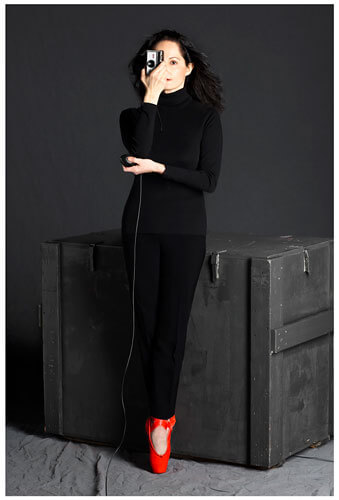Born in Barcelona in 1951, she moved to Madrid in 1970 where nine years later, she registered at PhotoCentro to completely dedicate herself to professional photography. She worked for the press and advertising sector in 1981, and made various still photos during film shoots. After a spell in New York to further her training, she returned to Madrid in 1986 where she produced
Toques, her first exhibition. She travelled the world between 1990 and 2007, discovering and immersing herself in different artistic and cultural expressions, before producing her following series and exhibitions:
Shaolín,
Camboya Herida,
Capoeira,
Contorsionistas,
Tanger,
Tango and
Toros. She usually works in black and white. She received the Gold Medal for Merit in Fine Arts in 2009 for her work.
Source: Spain Culture
When she was 20 years old, she moved to Madrid and started studying photography in 1979 in Photocentro. In 1986, she made her first exhibition,
Toques and she has already made more exhibitions in several countries of the world for more than 20 years. Her black-and-white photos are a study of people through pieces of the human body or pictures of toreros, dancers or warriors, by using a handmade and meticulous process of developing. Her works are in the
Maison Européenne de la Photographie, in Paris, the New Museum of Contemporary Art, in New York City, the Contemporary Arts Museum in Houston or private collections.
Source: Wikipedia
Isabel Muñoz stands out as an assertive photographer. Platinum developments and extra-large formats are favourite techniques used in order to strengthen her message of passion for the body as a means of approaching the study of human beings.
Tango and Flamenco (1989) are considered the starting point of her unremitting search of the sentiments and emotions of world groups and cultures in an attempt to capture the expressions of beauty of the human body. When Muñoz focuses her camera on dancers, wrestlers, warrior monks, bullfighters or deprived children she does it with a strong sense of commitment.
Her first individual exhibition,
Toques, in 1986 at the French Institute in Madrid and her participation in the Mois de la Photographie in Paris in 1990, set her international projection as a high profile photographer without boundaries. These will be the first of many exhibitions throughout the main cities of Europe, the Americas and Asia. Her photographs are shown at the Museo Nacional Centro de Arte Reina Sofía (Madrid), Foto Colectania (Barcelona), Fundación Canal (Madrid), Maison Européenne de la Photographie (París), New Museum of Contemporary Art (New York) and Instituto Cervantes (Mexico, Guatemala, Bolivia, Shanghai, Tokio).
Isabel Muñoz work has been widely recognized with numerous honours and distinctions. Recent awards include Fundación DEARTE (2012), the UNICEF Spain Awareness Rasing Award in 2010, Bartolomé Ros Prize (PHotoEspaña 2009), the Spanish Ministry of Culture Gold Medal to Fine Arts in Spain (2009), the first prize in photography by Comunidad de Madrid (2006), the two World Press Photo prizes (2000 and 2004), the Biennial of Alexandria Gold Medal (1999), Isabel Muñoz was born in Barcelona in 1951 and lives in Madrid since 1970.
Source: LensCulture
